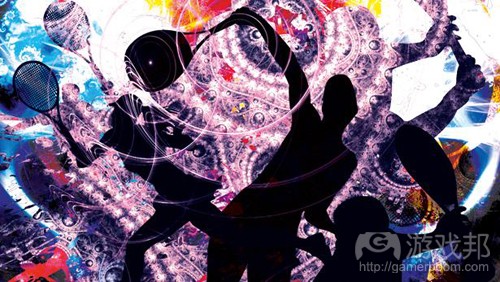设计师应寻找游戏中的未知因素以完善系统
作者:Tadhg Kelly
对我而言,优秀的游戏设计师的标志是,能够切中要点。这个关键技术是,将复杂的想法提炼成一套简单的指令,让程序员能够理解和执行。
想象一下,我们的世界上还没有发明出网球这项运动。你发明了这种游戏,只需要两副球拍、一只球、一张网、几条线和一个计分系统。你开始玩,但结果好像不怎么有趣。作为设计师,你可能会努力尝试平衡球拍的力度、网的高度等等,但还是没有让游戏更有趣。
你可能得花上一阵子才能想到双方决胜的规则。原因是,这是一条用来平衡旧现有的规则的新规则。任何时候,设计师增加什么东西,他们都会遇到阻力。增加新规则意味着编写更多代码,所以别人就会要求你证明新规则怎么有趣,因为这事看起来挺冒险的。这时候,清楚的交流表达就是关键了。
甚至是宫本茂也不能明确地说出原型是怎么样的,除非开发出来。你可以写下所有你喜欢的文件,画出所有你喜欢的线框,但你仍然不知道。这就是未知因素。如果你不能够完全清楚地知道玩家角色的执行动作和敌人遵循的规则,那么你就不可能找到那个未知因素,更别说改进它了。
这是一个类似于混沌理论的问题。使用迭代规则和模拟软件,数学家和科学家能够创造出精细的、很漂亮的模式。但他们通常不能预测这个模型会怎么样,直到他们看到模拟发生。他们得运行模型并观察,这就是为什么天气仍然很难预报的原因。
我想得越多,我就越觉得游戏就是一团混沌。在玩家和场景之间存在一种互相作用,这就是媒介和不稳定的因素。它的结果可能很好,也可能发生意外。游戏和策略的因素可以排列,但我们得为它制作原型,然后观察。所以我们应该更加了解这团混沌。
系统看起来可能非常混乱,但对于初始条件,它必须直观。当开发者讨论添加一个独特的机制时,他们的意思是玩家的角色有些不寻常的能力,或游戏世界的规则以某种方式赋予它某种能力。比如,《光晕》中的重力,设计师有意让游戏世界有一点儿浮力,这样就增加了游戏的感觉。对这些规则进行小的变动会对游戏产生重大影响。
混乱的系统必须有“拓朴的混合”。简单地说,这意味着在一个受约束的空间中,动态可以一次又一次地重复,如棋盘、足球场、PvP关卡或地下城。甚至在许多开放世界或动作冒险的游戏中,玩家在整个任务过程的游戏行为都被限制在一定范围的严密环境中。这产生了那个空间中的多变的活动,好游戏正是好在这里。
第三,混乱的系统必须有“密集的周期轨道”,这意味着大量相同的活动一个接一个地重复着,以产生有趣的结果。最成功的游戏就具有这个特点,从最简单的《俄罗斯方块》到复杂的《暗黑3》的战斗。游戏故意限制玩家可以进行的活动种类,所以他们常常是可重复的,结果也确实有趣。
如果你的动态系统符合这些规则,那么你的游戏很可能是一款一般意义上的好游戏。但是,可以是在特殊意义上的好游戏吗?不可能,除非这款游戏还有一些额外的东西:“怪异引子。”
怪异引子是指动态系统经历多次重复,始终朝向的一个理想点或形状。它作为系统应用的一条规则或几条规则(我们就称之为“怪异法则”吧)的结果而产生,而系统以某些方式包含或模拟它。各种奇异的破碎图像(游戏邦注:如在90年代早期的舞蹈文化中流行的)就是这种怪异法则的结果。它们的结果是美丽的。
怪异法则还是好游戏动态的关键。网球中的双方决胜规则就是一个例子。一条规则改变了整个游戏流程,产生了许多有趣的决策。英式足球中的越位规则是另一个例子,正如美式橄榄球中的前进传球。
有时候,一组规则也会产生怪异引子。《侠盗猎车手》的伟大之外不在于汽车驾驶物理学,而是当警察追击激活时产生的规则调整。使用相同操作引擎的游戏,但没有警察因素的游戏(《黑色洛城》)就无聊多了。
游戏设计的重大挑战可以描述如下:我们越是描述动态,我们就越描述不了。动态是只可意会,不可言传的。但是,如果我们想到怪异法则是怎么样的,我们就能描述得更清楚了。
怪异法则通常很容易表达,也就是说,玩家可以理解它们。比如,在国际象棋中,你必然向玩家宣布游戏规则。不多几句话就能解释清楚了,但就是那几句话改变了一切。杰出的游戏设计师可以找到那条规则,然后简单地表达出来。糟糕的游戏设计师把规则搞得太复杂,或者迷失在无尽的文件、论证和怀疑中。
所以,如果你在设计一款游戏,就找找怪异法则吧。但是,你要把它制定得尽量简单。(本文为游戏邦/gamerboom.com编译,拒绝任何不保留版权的转载,如需转载请联系:游戏邦)
Finding your videogame’s X-factor
by Tadhg Kelly
For me, the mark of a talented game designer is someone who’s able to get to the point. The key skill is to distil complex ambitions into simple sets of instructions that an engineer can understand and implement.
Imagine a world in which tennis hadn’t been invented. You create a game involving two bats, a ball, a net, some lines and a scoring system. You proceed to play, but it turns out it’s not that much fun. As the designer, you might try a lot of balancing to do with bat strength, net height and so on, but it wouldn’t make the game much better.
It might be a while before you propose a win-by-two rule. The reason is that it’s a new rule, as opposed to balancing existing ones, and any time a game designer proposes adding something they will encounter resistance. Adding new rules means more coding, so you’d be asked to justify how it would be fun, because it would seem like a risk. That’s where clear communication is key.
Nobody, not even Shigeru Miyamoto, can really tell how a prototype will feel until it’s developed. You can write all the documentation you like, draw all the wireframes you please, but you still won’t know. There’s an X-factor. If you aren’t able to be crystal clear about what actions the player’s doll can perform and what rules enemies are supposed to follow, then you will not be able to find that X-factor and improve on it.
This is a similar problem to chaos theory. Using iterated rules and simulation software, mathematicians and scientists are able to create elaborate and often beautiful patterns. But they cannot usually prophesise what the simulation will do before they see it happen. They have to run it and observe, which is why it is still difficult to predict the weather.
The more I think on it, the more I realise games are all about chaos. Somewhere in the interplay between the agency of the player and the urgency of the scenario is this intermediate and volatile pattern. Its results can be beautiful, emergent things can happen, patterns of play and strategy can form. But we have to prototype it, then observe. So we should know more about chaos.
For a system to be considered chaotic, it must be sensitive to initial conditions. When developers talk about having a unique mechanic, they usually mean the player’s doll has some unusual ability, or the rules of the world empower it in some way. Gravity in Halo, for example, is intentionally floaty and that adds to the feel of play. Small changes to these rules have big consequences in-game.
A chaotic system must also have ‘topological mixing’. In lay terms, this means a constrained space in which the dynamic can repeat over and over, such as a chessboard, football pitch, PvP level or dungeon. Even in many open-world or action-adventure games, play is constrained into a range of tightened environments over the course of missions. This leads to variable action within that space, which has thrilling results in a good game.
Third, a chaotic system must have ‘dense periodic orbits’, which means being iterated with lots of repeated actions that build on one another to form interesting outcomes. This describes most successful games, from the simplest session of Tetris through to the complex back and forth of a Diablo III battle. Games deliberately limit the kinds of action that you can take, so they are often repetitive and the results are indeed interesting.
If your dynamic conforms to these rules, you have a great chance of making a conventionally good game. Will it be special, though? Not unless it has something extra: a ‘strange attractor’.
A strange attractor is an ideal point or shape toward which a dynamic system moves over many iterations. It arises as a result of one or more rules (let’s call them ‘strange rules’) applied to the system, which constrain or mould it in certain ways. Various exotic fractal images (such as the ones popular in early ’90s dance culture) are the results of strange rules. They give rise to beauty.
Strange rules are also the key to great game dynamics. That win-by-two rule in tennis is one example. That one rule changes the whole flow of the game, leading to many interesting decisions. The offside rule in soccer is another example, as is the single forward pass in NFL football.
Sometimes strange attractors arise from a couple of rules. Arguably, Grand Theft Auto‘s greatness lies not just in car-steering physics, but in the rule governing when police chases activate. A game using the same steering engine but without the police factor (LA Noire) is much duller.
The big challenge of game design could then be described as this: the more we try to describe dynamics, the less we are able to. They are ineffable. But what we can do is be much clearer on what we think our strange rules might be.
Strange rules are usually simply expressed, meaning players can comprehend them. In chess, you must announce a checkmate, for example. That can be explained in five words, but changes everything. A great game designer can find that rule and express it just so. Bad game designers make the rule too complicated, or get lost in endless documentation, justification and doubt.
So if you’re designing a game, look for the strange rule. But make it as simple as possible.(source:edge-online)









































